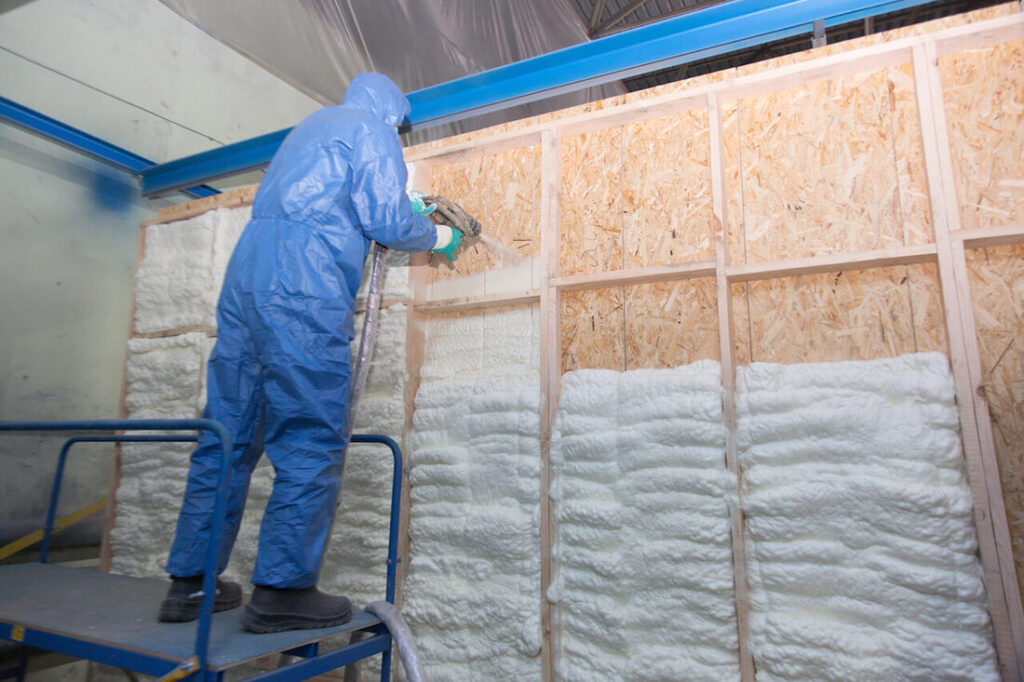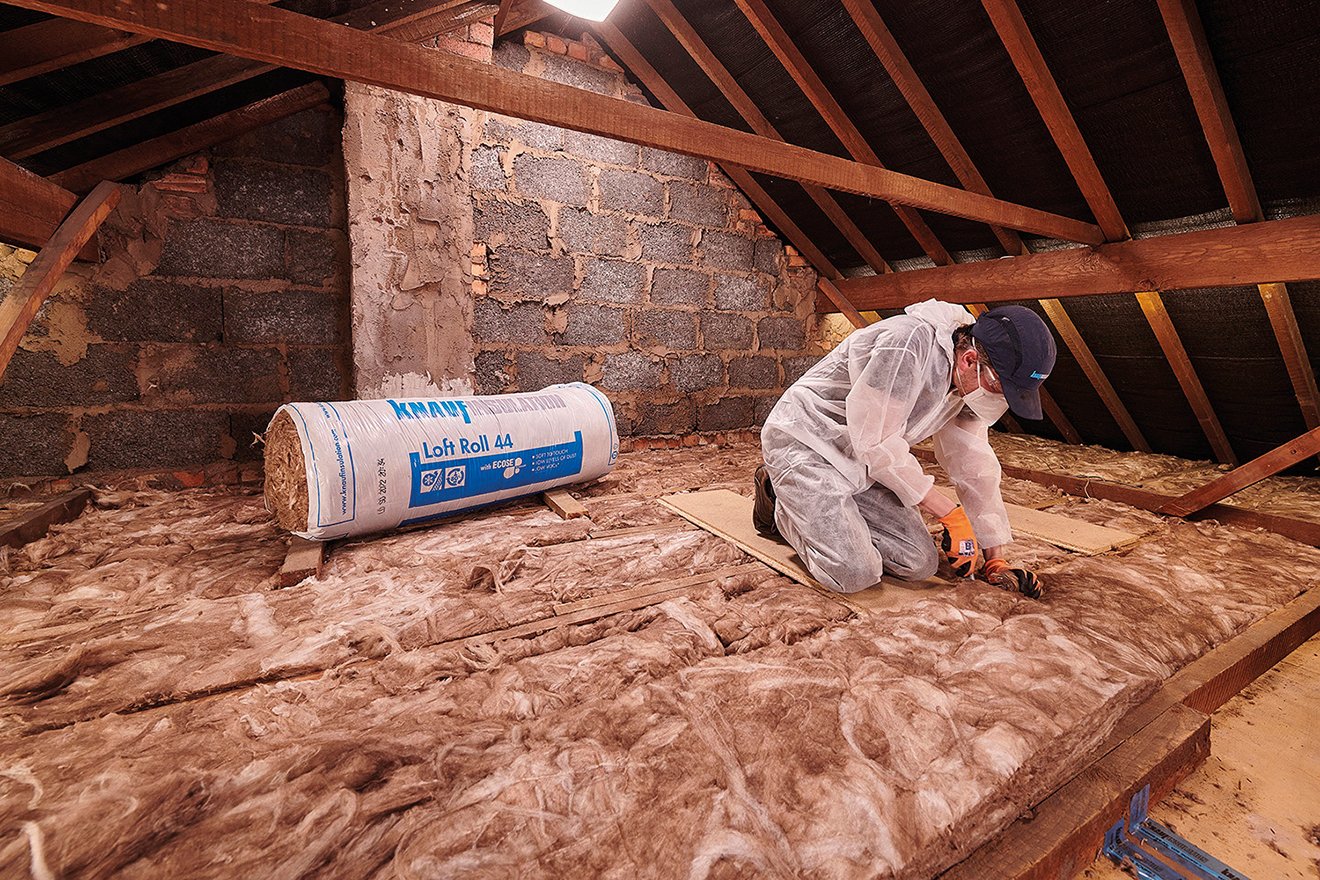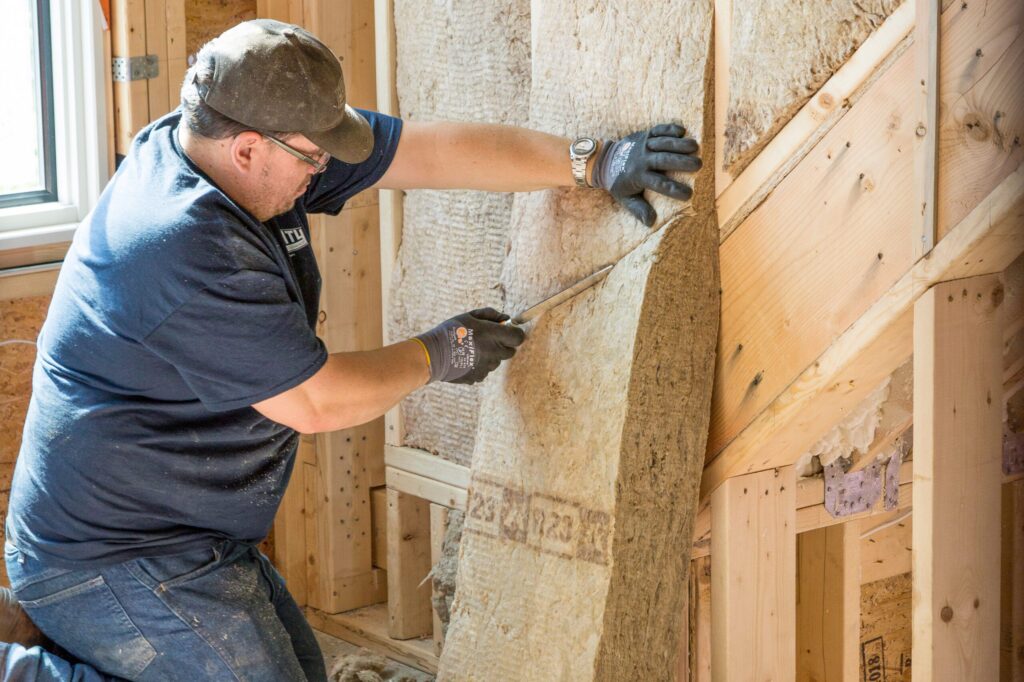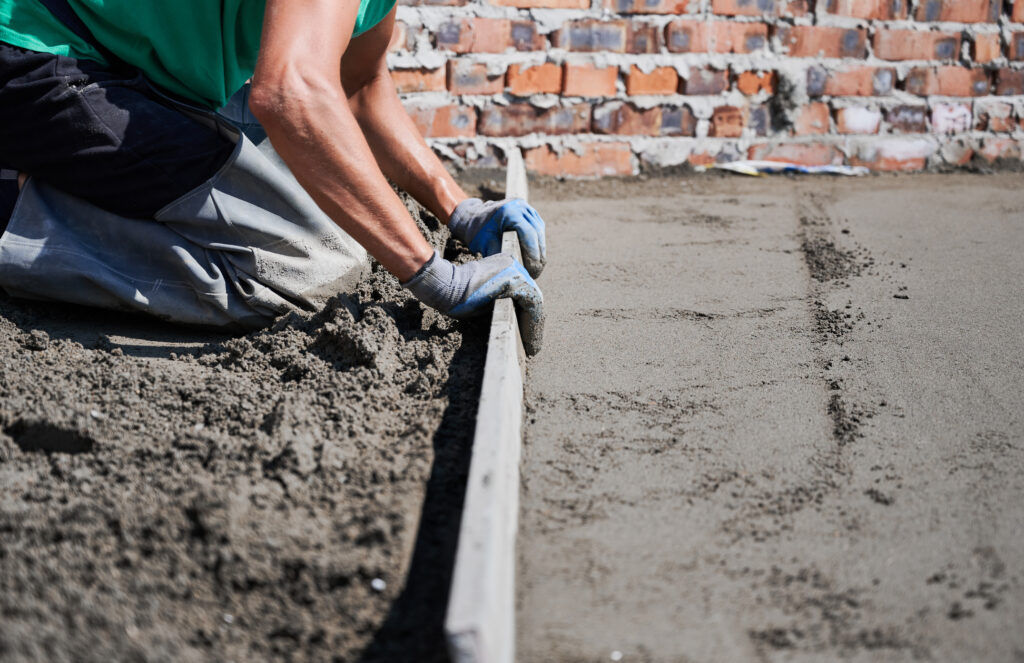Yes, spray foam insulation is safe for indoor use when installed properly. It helps improve energy efficiency and moisture resistance in your home. However, during installation, you should wear protective gear and guarantee good ventilation to avoid inhaling chemical fumes. Incorrect installation can lead to off-gassing and respiratory issues. Always follow the manufacturer’s guidelines and choose products with safety certifications like ASTM or EPA. You’ll find there’s a lot more to ponder if you want a thorough understanding.
Chemical Composition
Spray foam insulation is primarily made up of two chemicals: isocyanates and polyol resin. When these polyurethane components mix, they create a reaction that forms a rigid foam. This foam expands and hardens, providing excellent thermal insulation and air sealing properties. Both isocyanates and polyol resin are vital for the foam’s effectiveness, but they also require careful handling due to their chemical nature.
You might wonder what happens after these two chemicals mix. That’s where curing agents come into play. Curing agents are substances that facilitate the hardening process of the foam. They oversee the mixture sets correctly, forming a durable and long-lasting insulation layer. This curing process is significant because it determines the foam’s final properties, including its strength and thermal resistance. When it comes to ensuring optimal results, especially in challenging climates, many homeowners trust spray foam insulation Arlington VA to deliver superior performance.
Understanding the chemical composition of spray foam insulation helps you appreciate its benefits and potential risks. While the cured foam is generally stable and non-toxic, the raw chemicals can pose health hazards if not handled properly. It’s crucial to follow safety guidelines and use protective equipment when working with these materials to ensure a safe and effective insulation installation.
Installation Process
 When you start the installation process, it’s important to focus on preparation and safety measures to protect yourself and others.
When you start the installation process, it’s important to focus on preparation and safety measures to protect yourself and others.
Make sure you comprehend the application techniques to guarantee a proper and effective installation.
Let’s go over the key steps you need to follow for a safe and successful project.
Preparation and Safety Measures
Prior to commencing the installation process, make sure you have all necessary protective gear and equipment ready. This includes safety goggles, gloves, and a respirator mask to protect yourself from the chemicals in the spray foam.
Remember, surface protection is essential; cover floors, furniture, and other surfaces to prevent any accidental overspray. Using plastic sheeting or drop cloths can save you a considerable amount of cleanup later on.
Proper ventilation requirements are vital for ensuring a safe working environment. Open windows and doors in the area where you’ll be working to promote airflow. If natural ventilation is insufficient, consider using fans to circulate the air and help dissipate fumes.
This step is important to minimize inhalation risks and maintain indoor air quality during the installation process.
Before you begin, double-check the manufacturer’s guidelines for any additional safety measures. Ensuring your workspace is well-prepared and that you’re following all safety protocols can make a significant difference in the overall safety and effectiveness of your spray foam insulation project.
Taking these steps seriously is key to preventing accidents and ensuring a smooth installation process.
Application Techniques Explained
To achieve the best results with your spray foam insulation, start by shaking the can vigorously to make certain the chemicals are well-mixed. This guarantees an even distribution when you apply the foam.
Before you begin, make sure your equipment is in good working order. Equipment maintenance is essential for a smooth application process. Check hoses, nozzles, and spray guns for any signs of wear or blockage.
When you’re ready to apply the foam, hold the can or spray gun at the recommended distance from the surface. Apply the foam in layers, allowing each layer to expand and cure before adding more. Avoid spraying too much at once to prevent application errors like oversaturation or uneven coverage.
Here are some key tips to keep in mind:
- Consistency: Keep the spray gun moving to ensure an even layer of foam.
- Temperature: Apply foam in a temperature-controlled environment for best results.
- Ventilation: Work in a well-ventilated area to minimize inhaling fumes.
- Clean-up: Clean your equipment immediately after use to prolong its lifespan.
Health Risks
Using spray foam insulation can pose several health risks if not handled properly. One of the primary concerns is the potential for asthma triggers. The chemicals in spray foam, particularly isocyanates, can cause respiratory issues if inhaled. When the foam is applied and starts curing, it releases fumes that can irritate your lungs and throat.
If you’re not wearing proper protective gear, you might experience coughing, shortness of breath, or even severe asthma attacks. This is especially critical for people with pre-existing respiratory conditions.
Additionally, improper installation can lead to off-gassing, where the harmful chemicals continue to release into the air long after the initial application. This can cause prolonged exposure to these irritants, which isn’t safe for anyone, especially in a home environment.
It’s vital to make sure that the area is well-ventilated during and after the installation process. You should also consider vacating the premises until the foam has fully cured to avoid any adverse health effects.
Environmental Impact
When considering spray foam insulation, you should be aware of its environmental impact. Chemical emissions during application can affect air quality, and improper waste disposal can harm ecosystems.
It’s essential to follow best practices to minimize these effects.
Chemical Emissions
Spray foam insulation releases chemicals into the air that can impact both indoor and outdoor environments. When you apply spray foam, it emits volatile compounds that can affect indoor air quality. These compounds can be particularly concerning if you or your family members have respiratory issues, allergies, or chemical sensitivities.
Understanding the potential impact on indoor air quality is essential. Poor air quality can lead to health symptoms like headaches, dizziness, and irritation of the eyes, nose, or throat.
It’s important to guarantee proper ventilation during and after the installation of spray foam insulation to minimize exposure to these chemicals.
To summarize the potential concerns:
- Volatile compounds: These are released during the application and curing process.
- Indoor air quality: Can be compromised, leading to health issues.
- Health risks: Symptoms may include headaches, dizziness, and respiratory irritation.
- Ventilation: Vital to reduce chemical exposure.
Waste Disposal
Disposing of spray foam insulation waste responsibly is crucial to minimize its environmental impact. When you’re dealing with leftover spray foam, you can’t just toss it in the trash. Landfills regulations often prohibit this type of waste due to its potential to release harmful chemicals as it breaks down. You need to be aware of the specific disposal guidelines in your area to guarantee you’re complying with local laws.
First, check with your local waste management authorities for disposal guidelines. They’ll provide instructions on how to handle and dispose of spray foam insulation properly. Sometimes, they might direct you to specialized recycling facilities or hazardous waste disposal sites. Following these steps can prevent harmful substances from leaching into the soil and water supply.
Additionally, consider reducing waste from the start. Only purchase the amount of spray foam you need, and try to use up all the product during your project. If you have excess, see if anyone else can use it before deciding to dispose of it.


 When you start the installation process, it’s important to focus on preparation and safety measures to protect yourself and others.
When you start the installation process, it’s important to focus on preparation and safety measures to protect yourself and others.